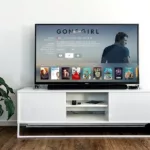Technology has come a long way to serve individuals who encounter hearing problems. We now have access to modern hearing-aid technology that users would not have imagined several years ago.
Scientists and audiologist are working on different experiments to improve the quality of life for over 360 million all across the globe that are impaired. Even though normal hearing may seem simple, it is a complex system with a number of internal connections. Nevertheless, here is how the new hearing aid technology has granted relief from hearing problems to the victims.
Directional microphones
Background noise is one of the biggest problems that people with hearing loss face. It makes them difficult to hear what they actually want to hear. Directional microphones gathers the sound from one direction and filters the confusion.
Most of the hearing aids that are produced in this time have built-in directional microphones. These are critically essential for individuals with hearing problem since it helps them in multiple manners.
Streaming accessories
Hearing aids have developed exponentially. It can connect with a number of devices that are being used on regular basis such as smartphones, computers and tablets. Streaming technology helps to link hearing aid with devices to turn on music, make phone calls, or carry out different operations. Some of them even enables the user to stream directly from tablets or smartphones.
Hearing loops and telecoils
Hearing aids are meant to serve us in face-to-face conversations however the sound distorts particularly in larger settings like stadiums, movie theaters and airports. Loop systems can be beneficial in this context. There are internal connections of over one microphone that results in an amplifier and a wire loop that travels around the room and transmit sound through electromagnetic waves. Signals are received by telecoil which is a wire in your hearing aid.
Loop systems have been in the market for several years, yet many people are unaware of its existence and the benefit it tends to offer. Not all large facilities avail it. However, public places are making investment. In a nutshell,
FM and Infrared systems
These systems allow you to hear effectively in settings like classrooms. It helps by transmission of sound like radio signals. Infrared systems operate in a similar manner.
Personal sound amplifiers
These are also termed as personal listening devices or hearable that are similar to hearing aids. They operate just like them but are cheaper and can be bought easily.
The bottom line
Purchasing a hearing aid is not as simple as it seems. It is not simply heading towards a store and picking up the first option. It is imperative to take some time to figure out what you want the device to do for you. Even if all the features are not meant to be useful to you, hearing aids tend to serve well generally. In the end of the day, choose an option that has the latest features since it can enhance the overall functionality.








